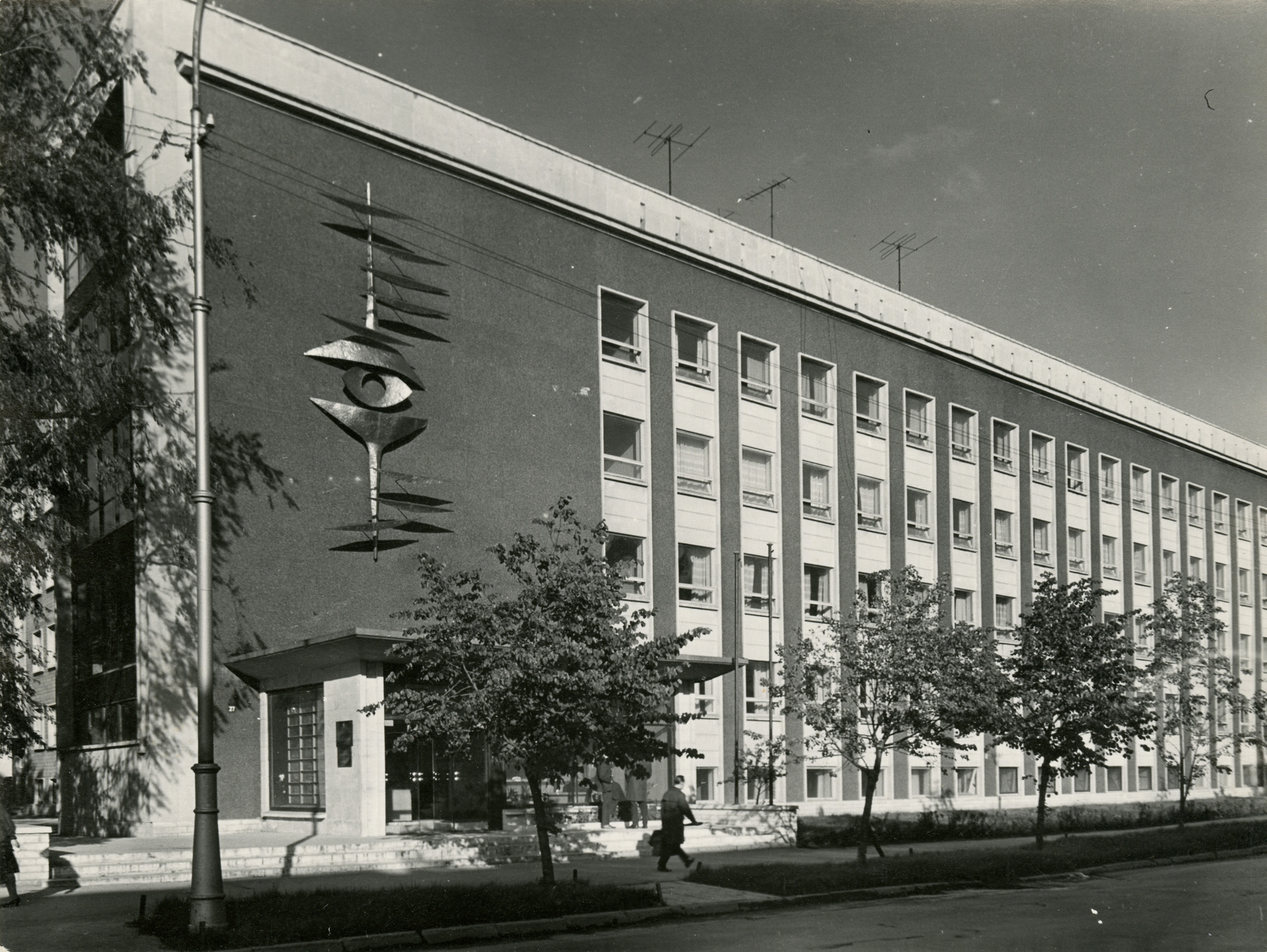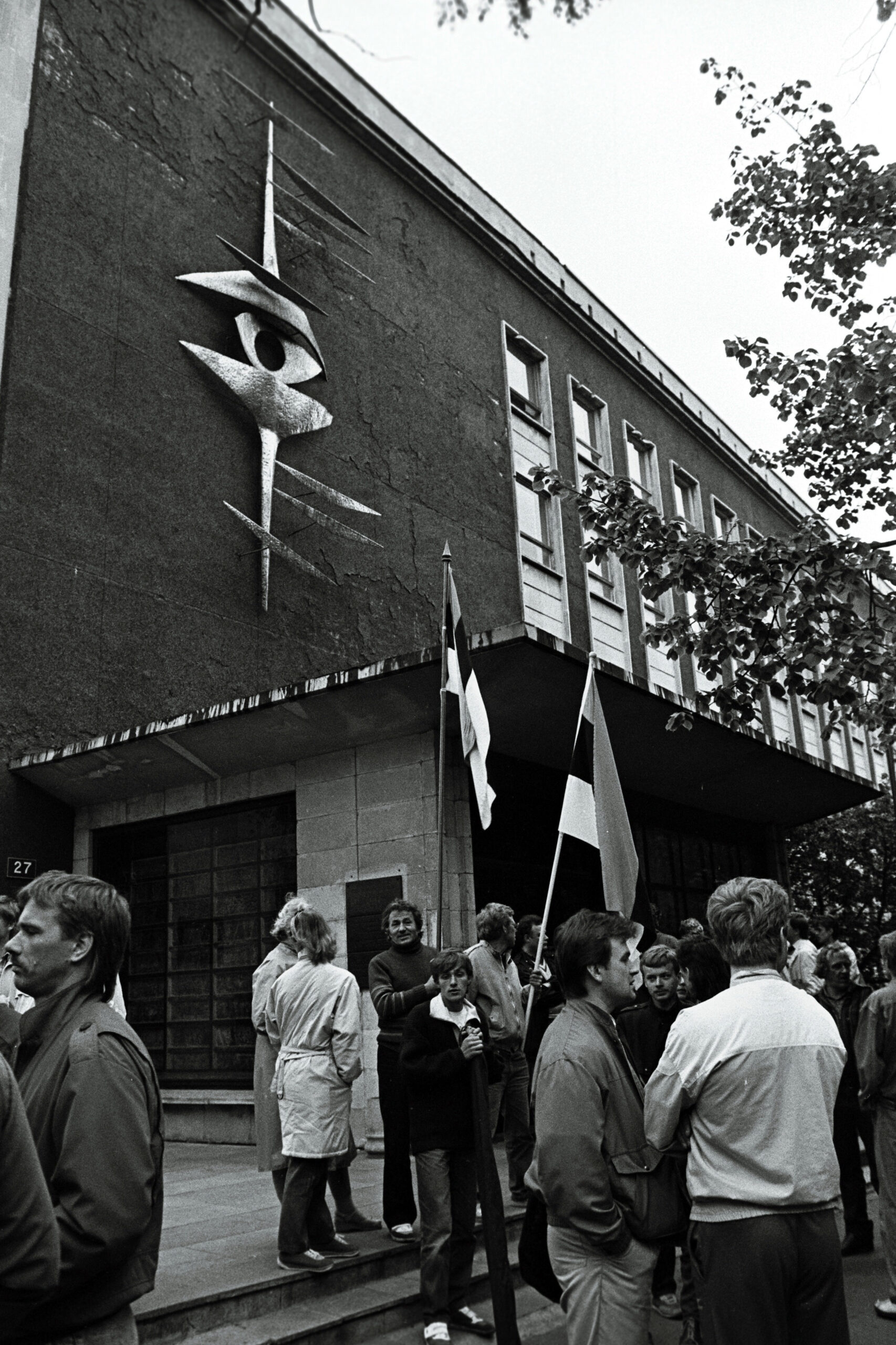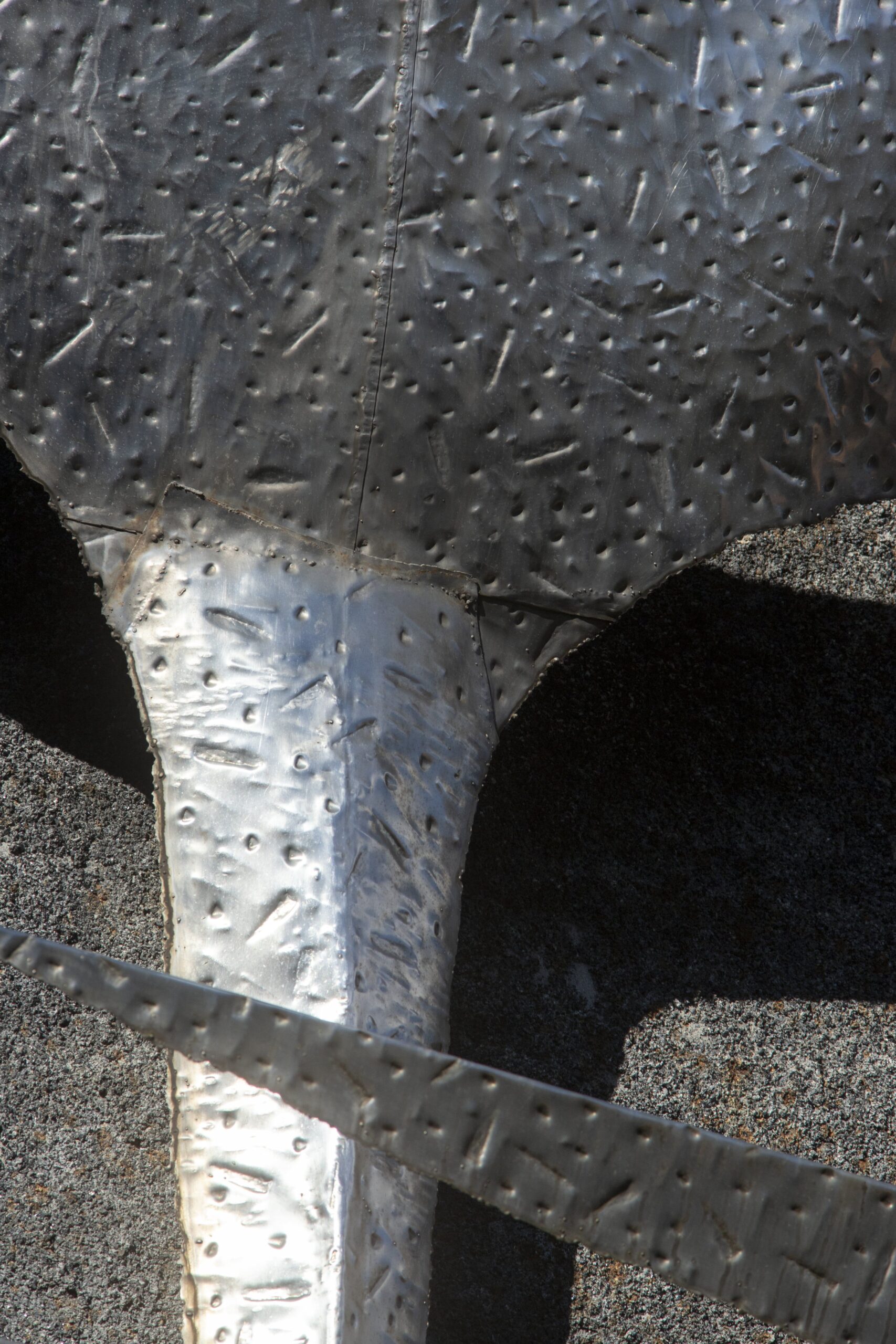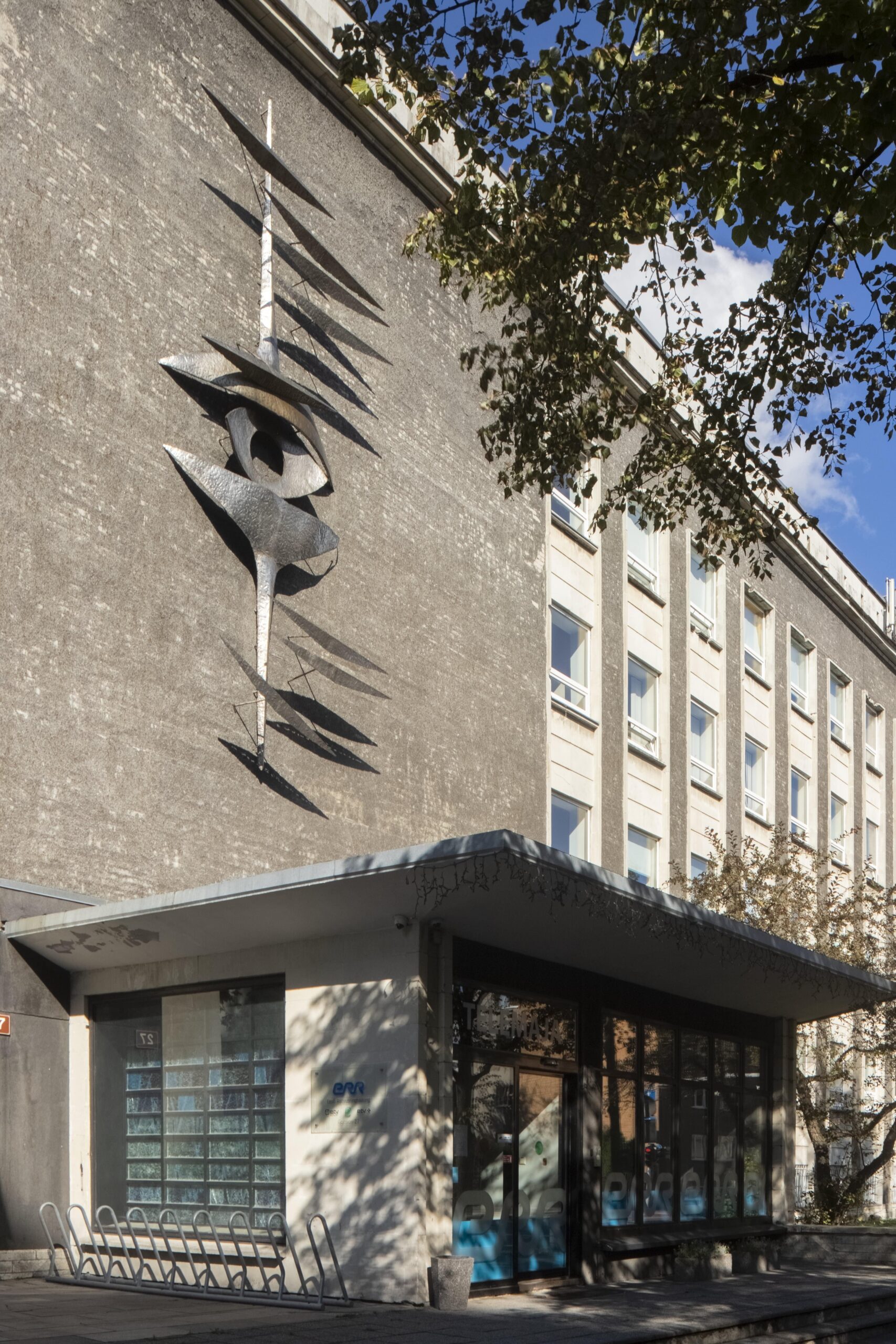Sculpture Telesilm (“Tele-Eye”)
Year of completion: 1965
Address: Harju County, Tallinn, Gonsiori 27
Author Igor Balašov
Embossed stainless steel
Not listed as a cultural monument
Attempts at television broadcasting took place in Estonia already during the 1930s but the first television channel was established in 1955. Initially, Tallinna Televisioonistuudio (Tallinn Television Studio) operated in the Estonian Radio Building but in 1965 the Estonian Television Building was constructed – one of the first modernist office buildings in Estonia after the war. The building was adjusted solely for the special features necessary for producing and broadcasting television shows. After moving into its own house, Tallinna Televisioonistuudio became Eesti Televisioon (Estonian Television).
The authors of the Estonian Television Building, Paul Koido and Paul Madalik did not intend a decorative piece to be installed, until architect Udo Ivask introduced to them Igor Balašov, a metal department student in the Estonian Academy of Arts. At the time, studying metal arts mainly meant working in the field of jewellery art. Balašov, however, wished to create large-scale metal sculptures, and so the cooperation between the designers of the Television Building and Balašov was born. The sculpture Telesilm, Balašov’s final project in the Estonian Academy of Arts, was finished in the same year as the building.
Balašov designed an abstract eye motive onto the façade of the building with approval from the Estonian Television Building’s architects and the innovative management. The composition created distrust in the institutes responsible for ideological correctitude, however. The central detail depicting an eye was clear and caused no dissatisfaction – an eye like any other, perfectly in accordance with the concept of television. It was the other details that raised questions. Balašov’s design intended long and narrow elements, heading into two directions vertically from the eye, which would have symbolised television masts. The “mast” heading downwards caused discontent as no antenna is placed like that. There was a hurry to finish the Television Building, and good connections played a role in such cases, thanks to which the artist’s design went into use despite the criticism.
The only room nearly suitable for creating the large-scale sculpture was ETV’s own workshop. It was there that Igor Balašov began crafting the monumental eye through trial and error. As the Estonian Television Building workshop, intended for fixing antennas, turned out to be too small and young Balašov lacked the materials and the experience to process such a large surface, the artist was forced to work on processing the sheet metal pieces for multiple months before the eye sculpture was ready for installation on the wall. After construction, additional decorative pieces were created for the interior of the Television Building. To this day, only the stained glass in the lobby facing Gonsiori St. has survived besides the Telesilm.
Anu Soojärv










